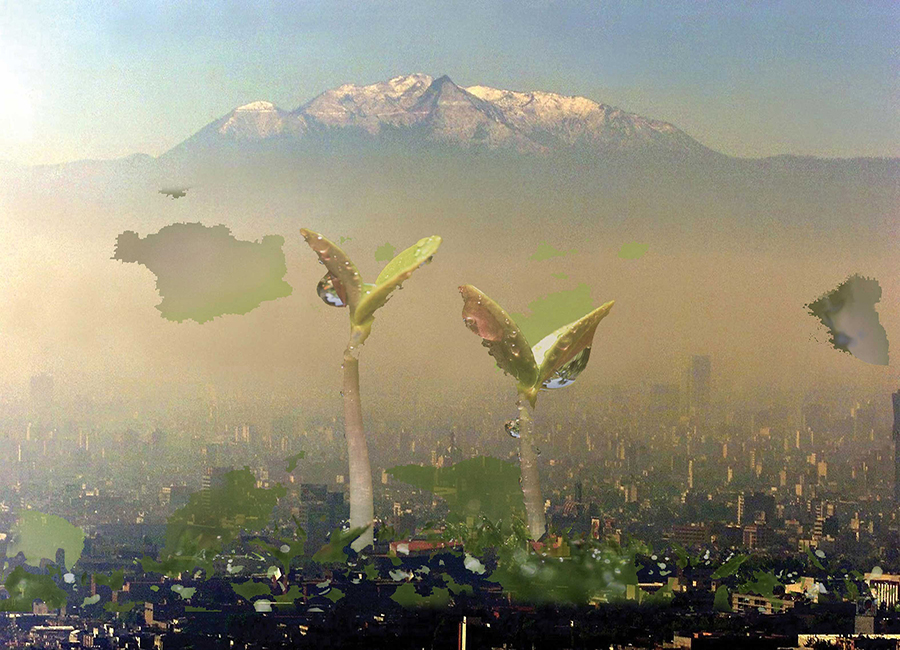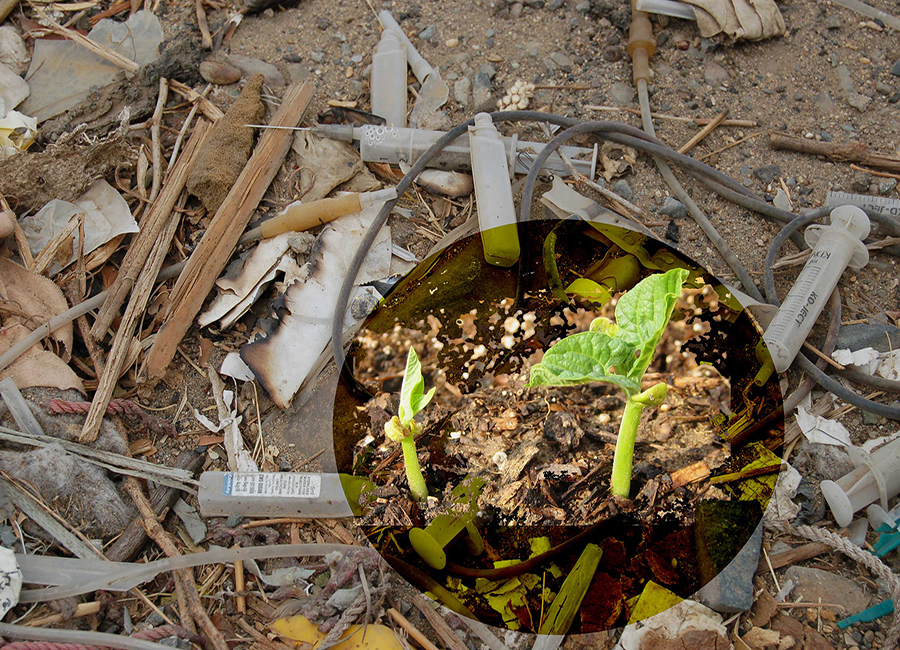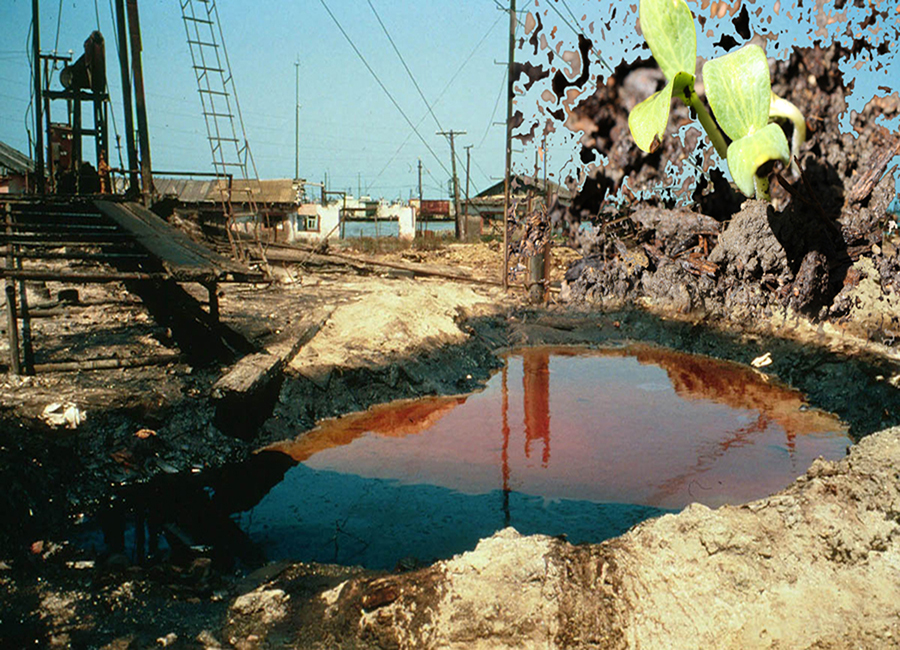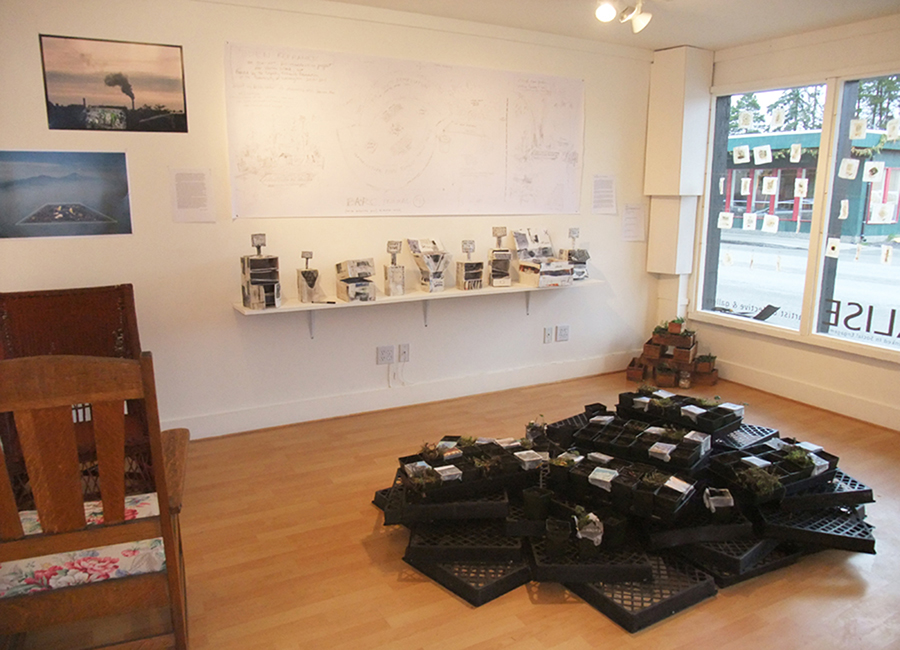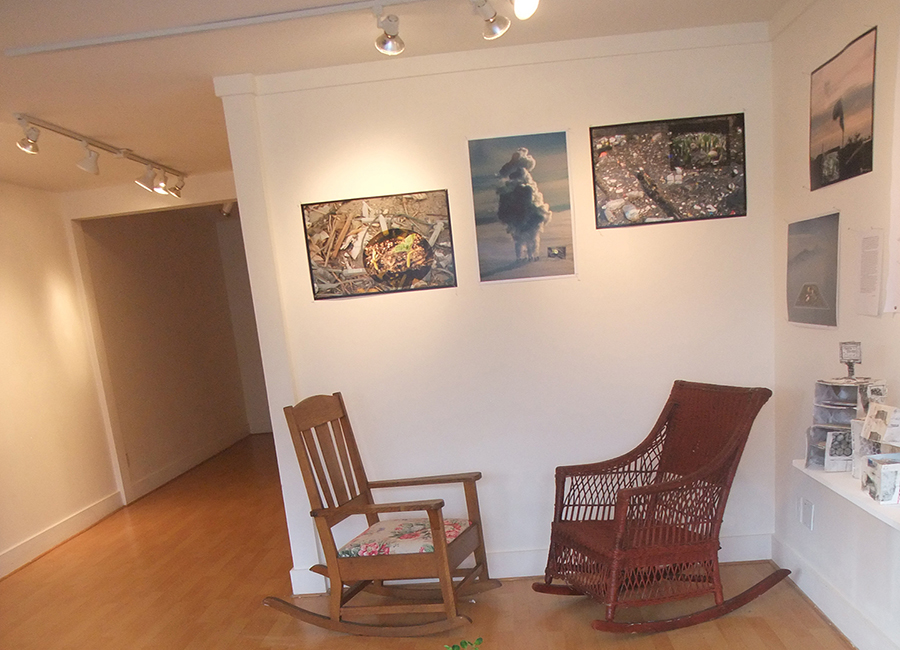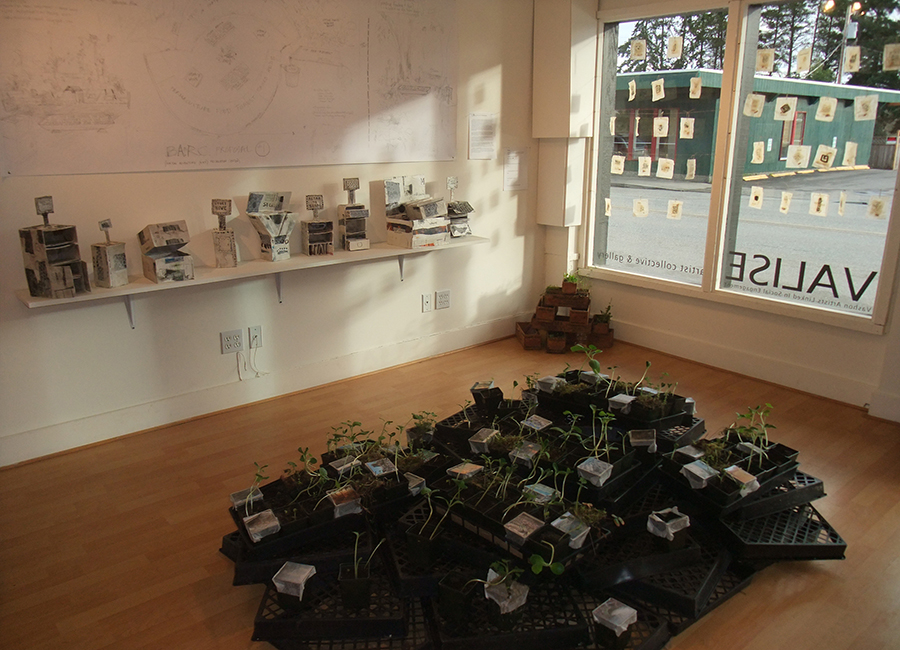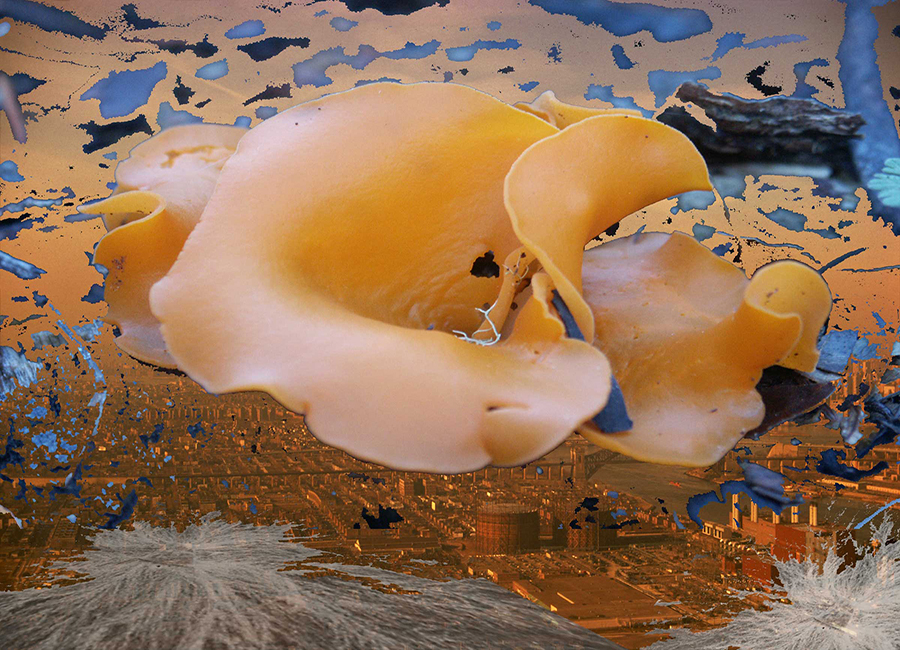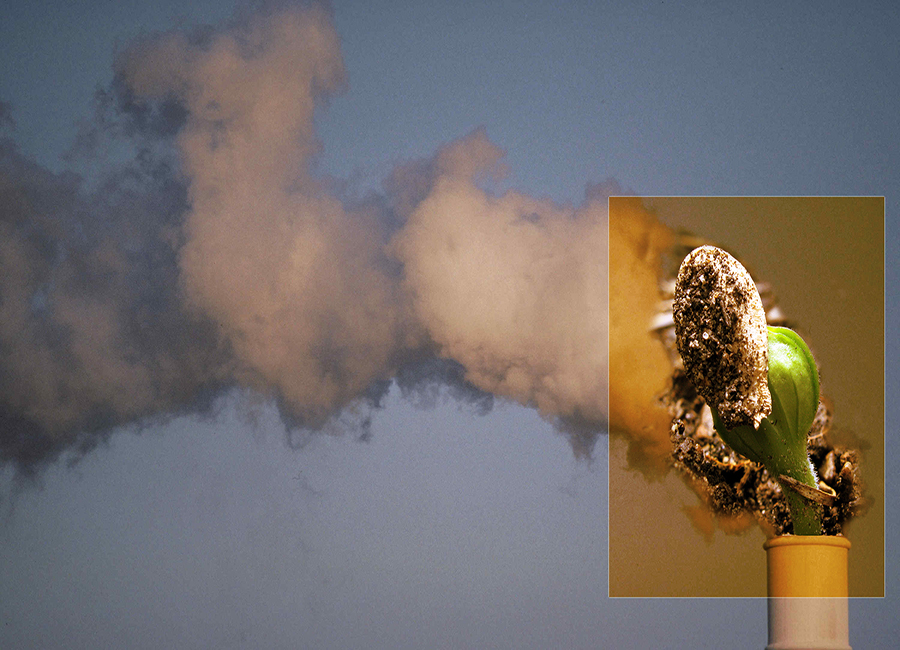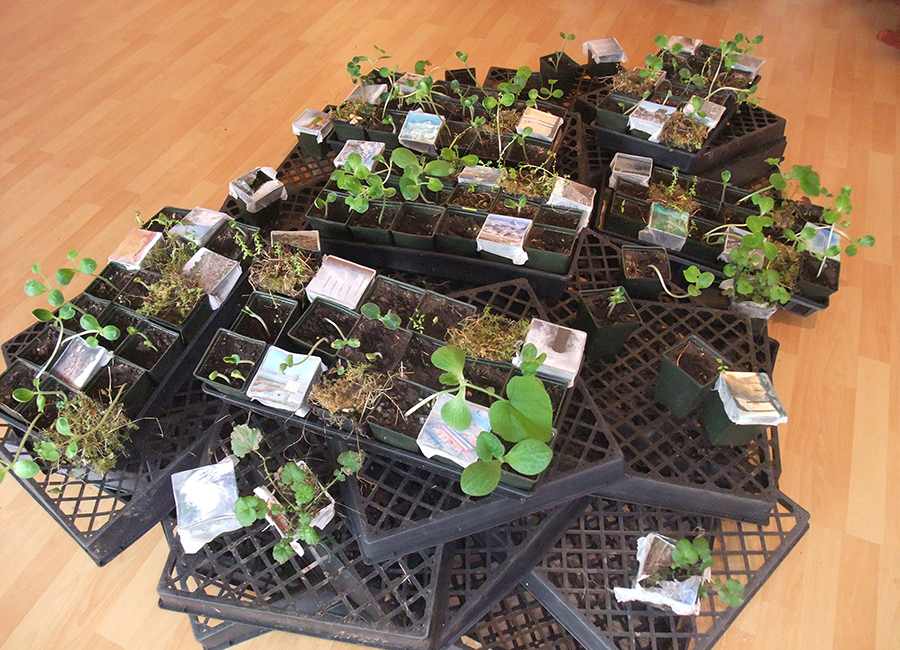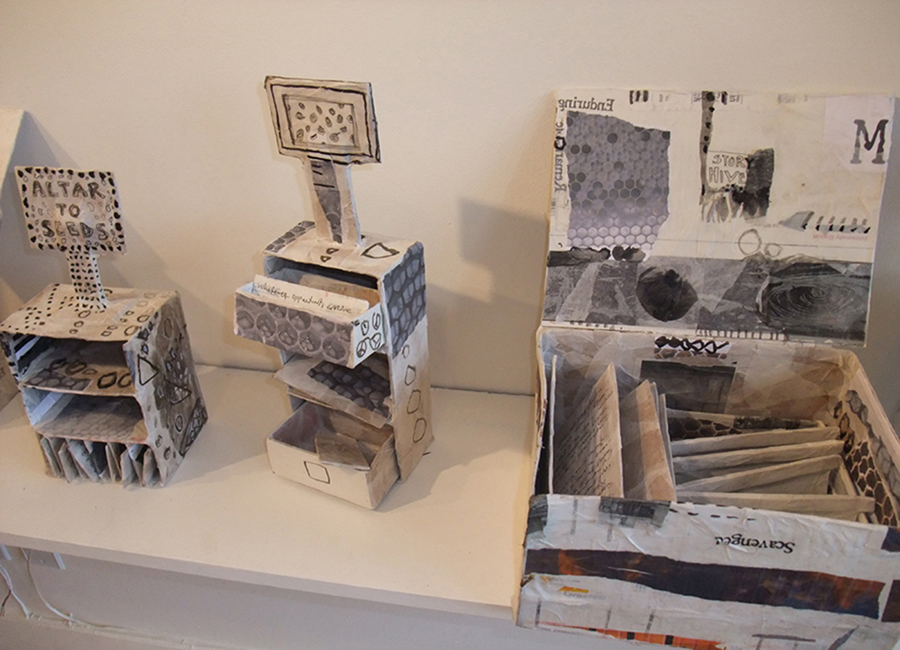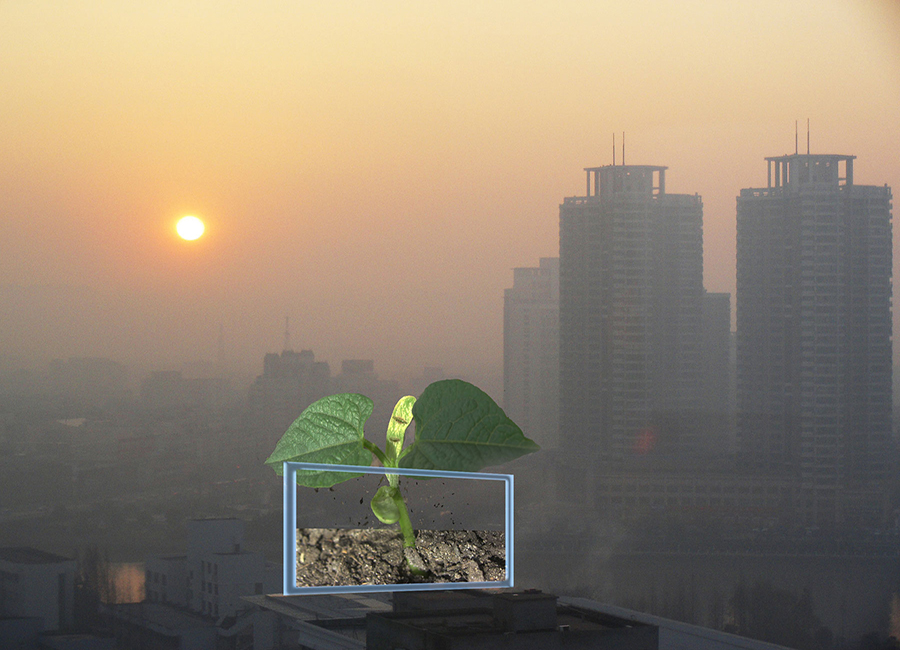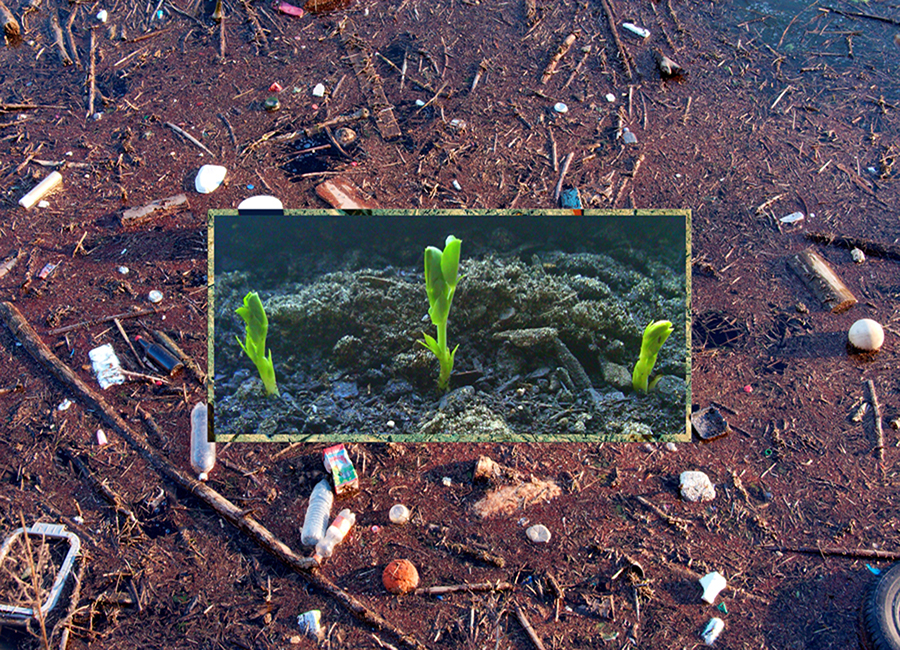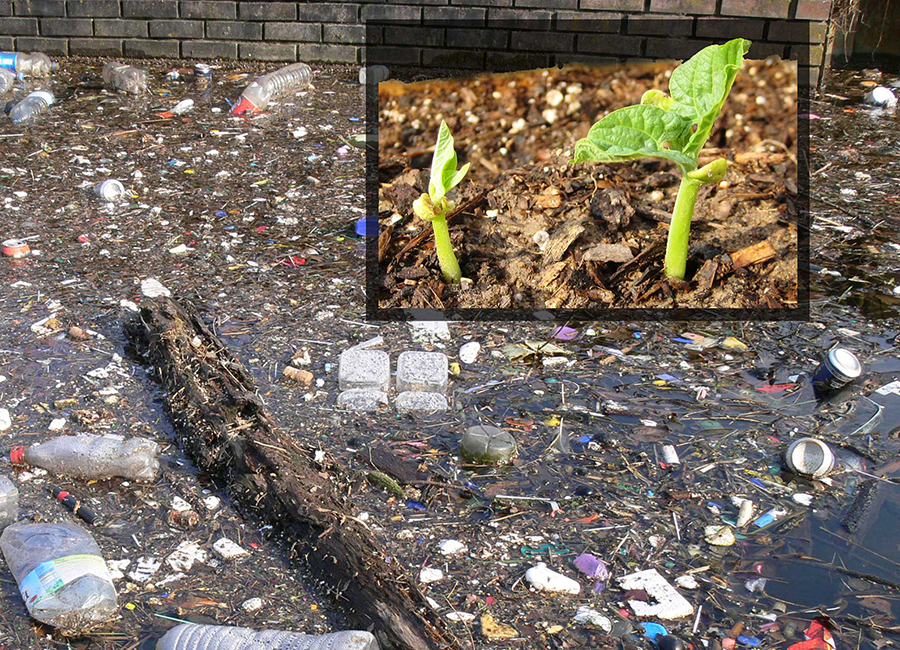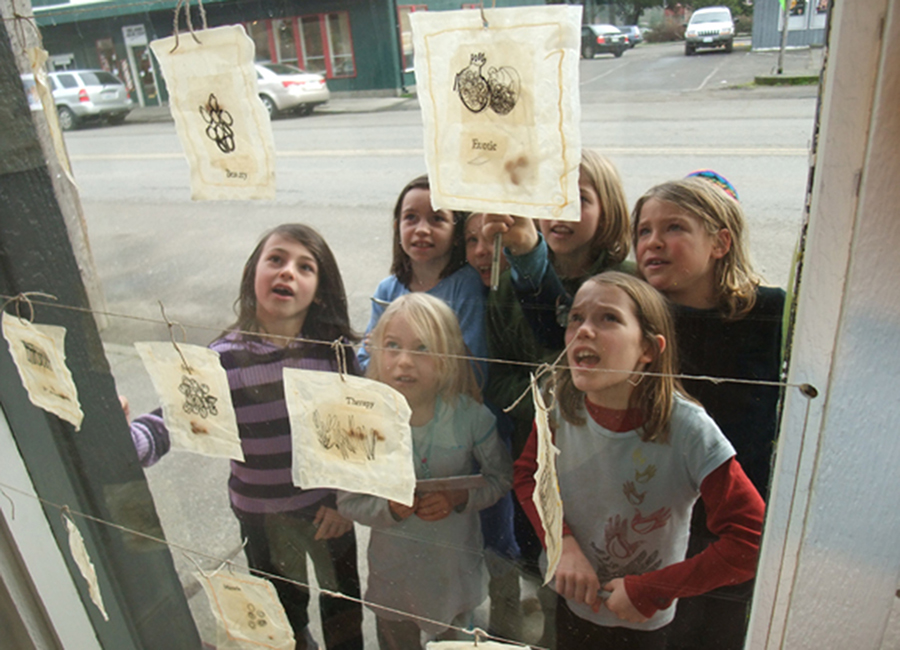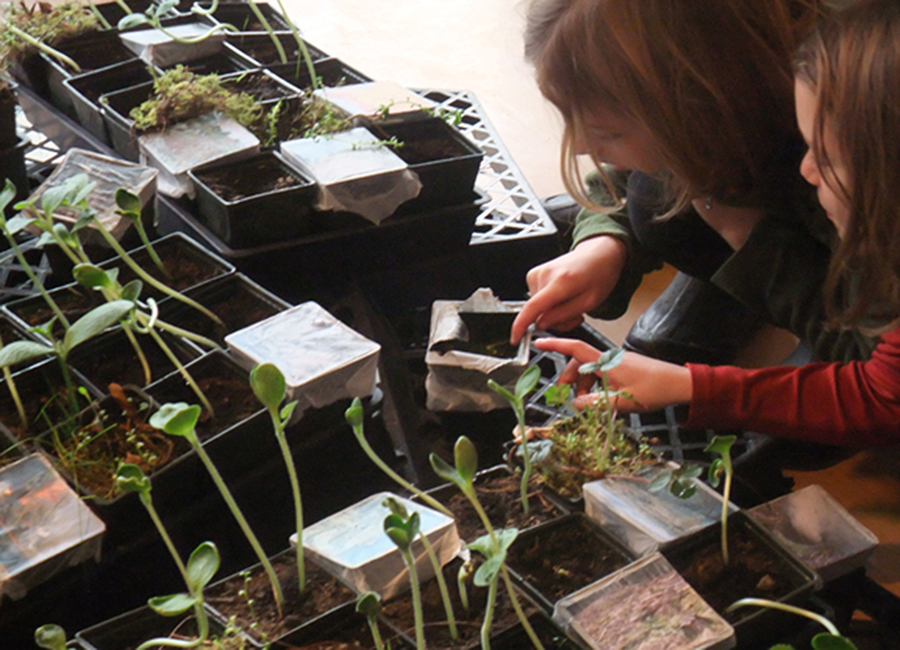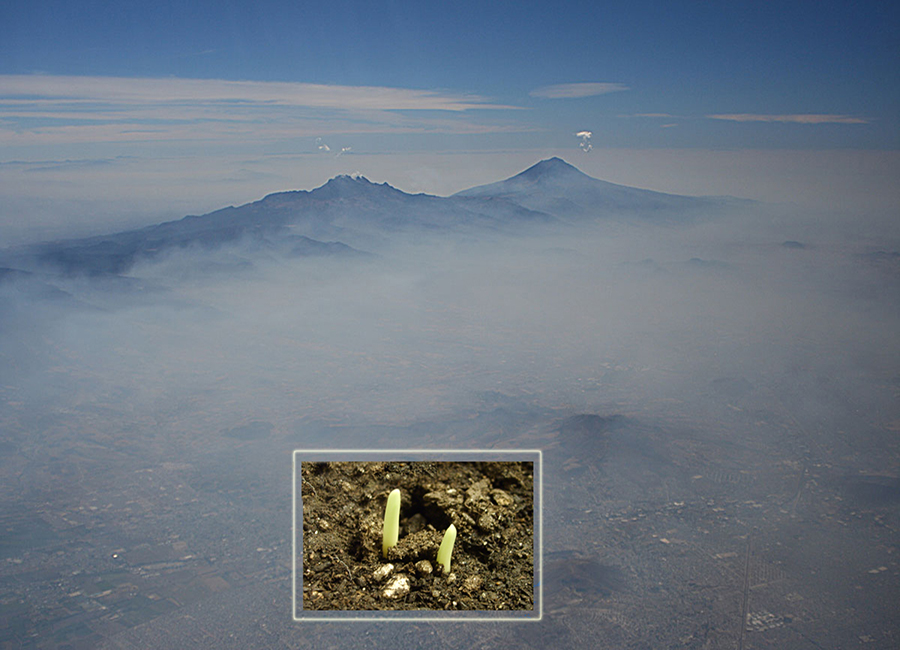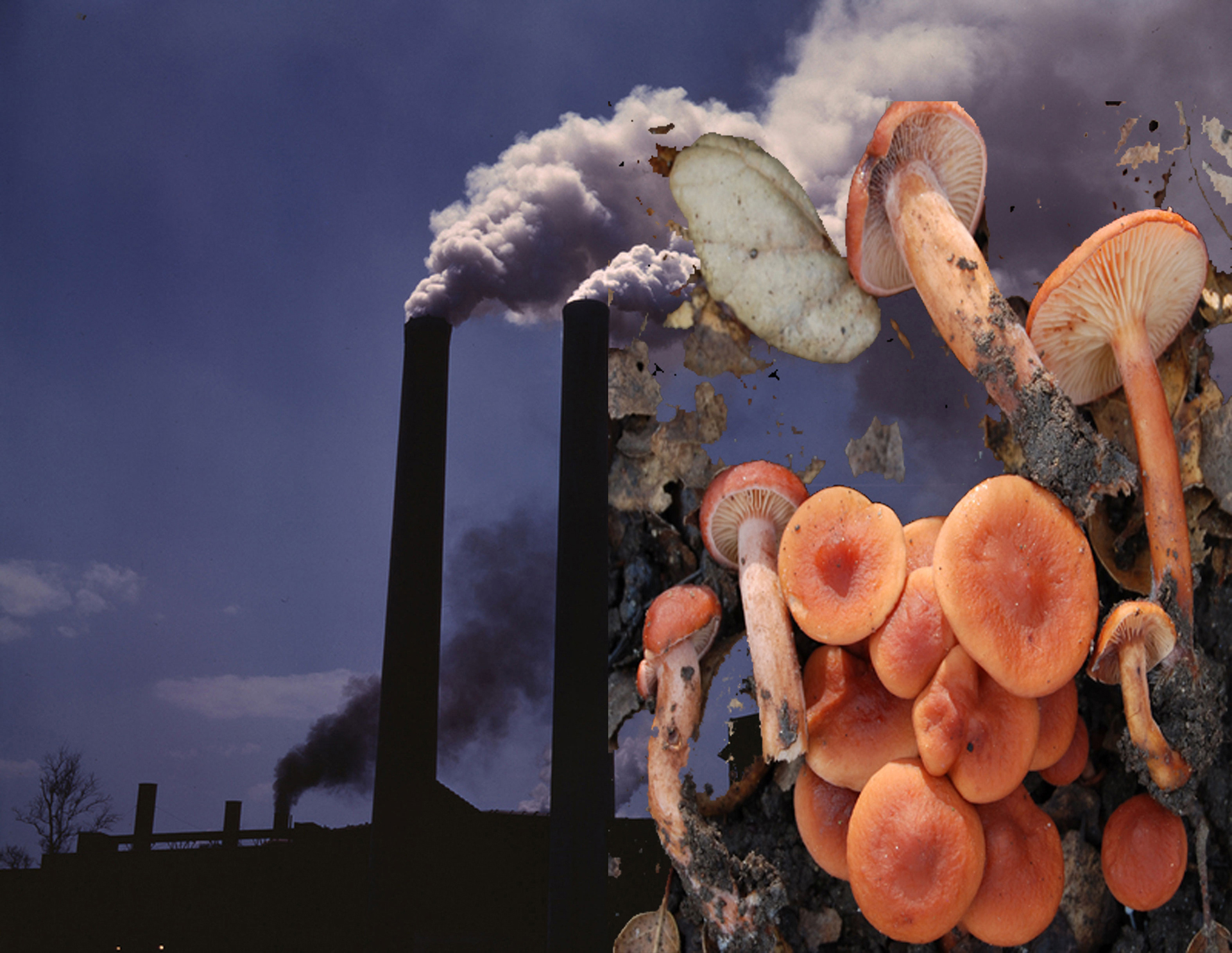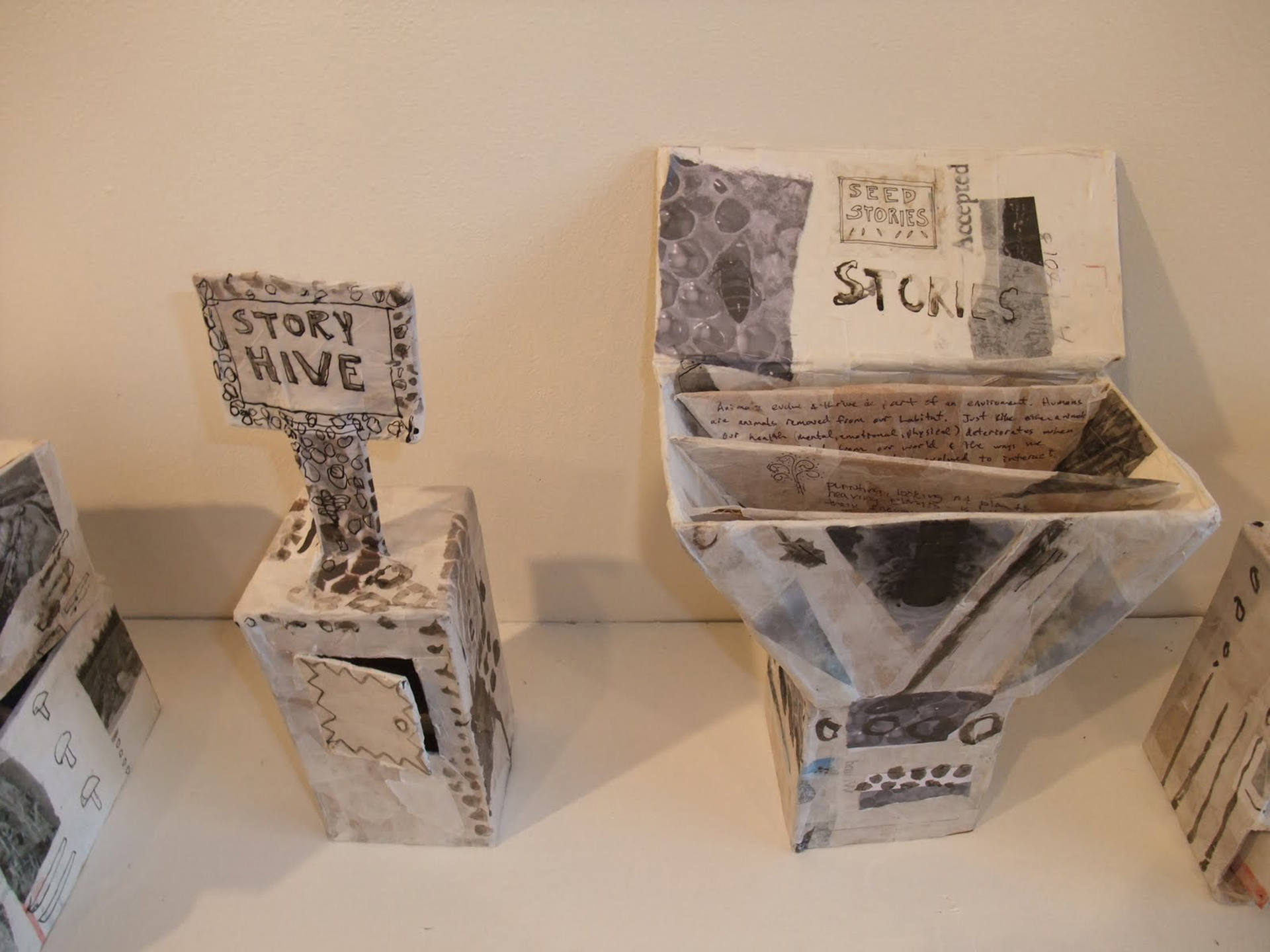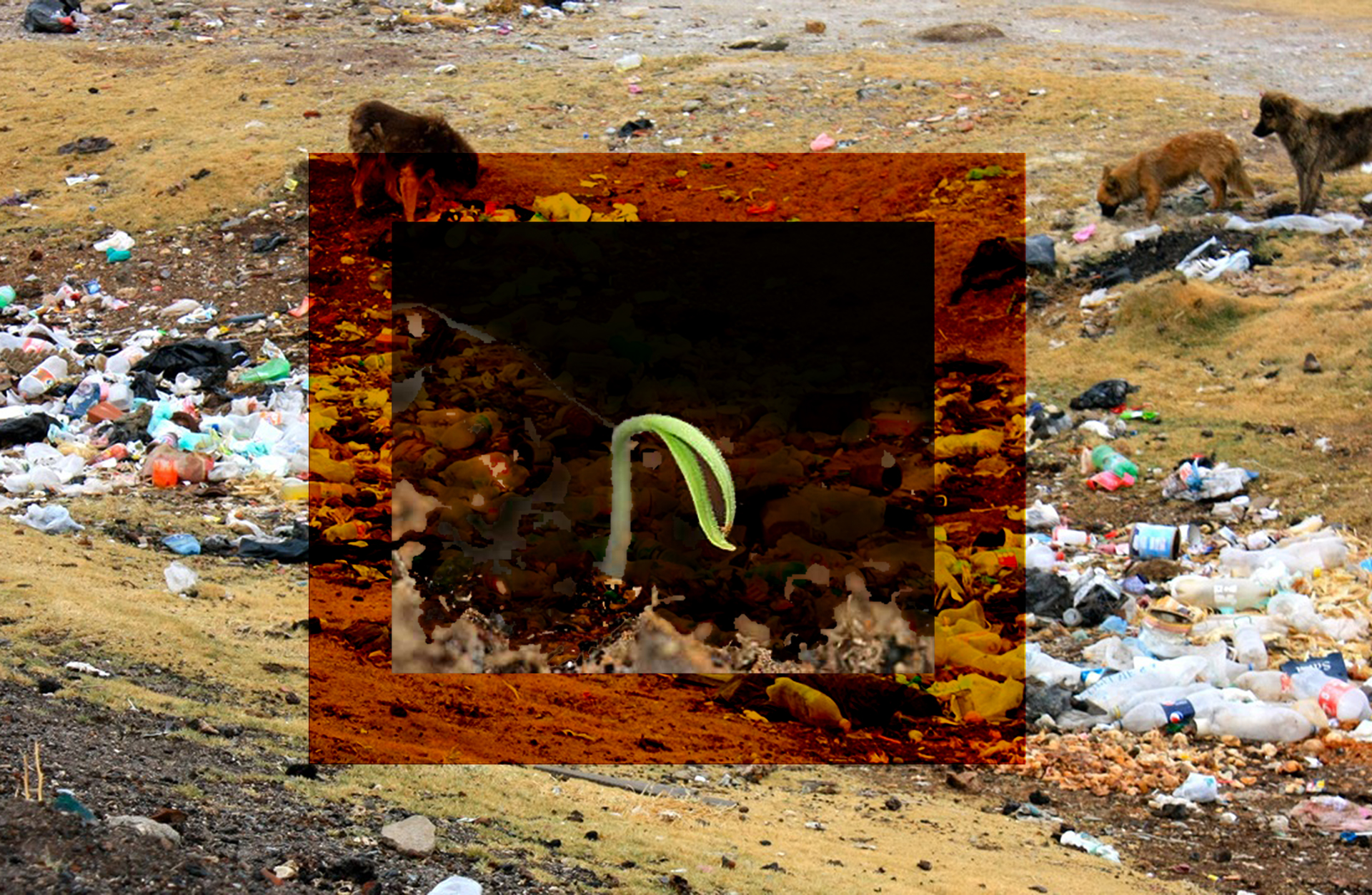Reframing Eden
An installation that includes a series of digital photo collages, models for the story hive, sculptural seed packets, seedlings and a space for collecting stories, 2011, VALISE Gallery, Vashon, WA, 20x15 feet.
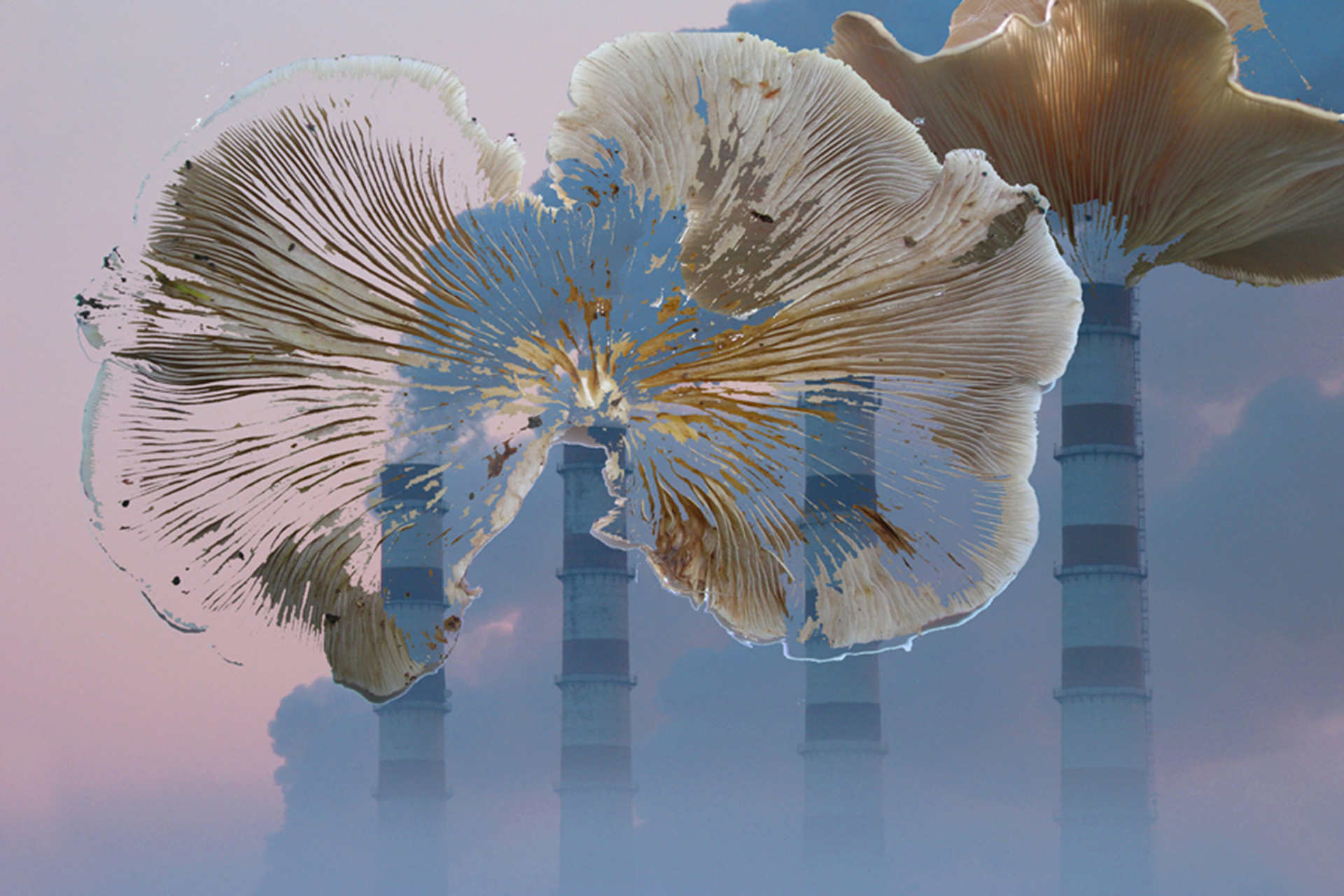
Artist’s Statement, VALISE Gallery, Vashon, WA, January 2011
Several years ago, I asked my mother what inspired her to garden, and she told me the story of when she was little girl, living in a cramped, tenement apartment in the Washington Heights neighborhood of Manhattan, and how much she wanted to grow things. She saved some tomato seeds, got some dirt from the park, planted the seeds in a wooden cream cheese box from her father’s grocery store and put the box out on the fire escape. She watered it regularly and waited. Little seedlings emerged, but no tomatoes; still the magic of the sprouting seeds got her hooked.
I grew up with two people who spent their weekends and every daylight hour that they weren’t at work, planting, weeding, pruning, watering, harvesting, composting and canning. My parents were very scientific and practical people, and had no patience for religion or mystical thinking. Yet I became convinced as an adult that their commitment to growing things and putting healthy food on our table was a spiritual practice. Kneeling on the ground and believing in the miracle of seeds, and the interconnectedness of light, water, soil, seasons, is a faith.
So in this time of continual ecological disasters, I felt it would be important to call on the people who subscribe to this faith, whether or not they think of it as spiritual, and hear their stories. This is part of the remediation that needs to happen. It will give us the courage to keep organizing to resist corporate control of every aspect of our lives. Like mycelium (fungus) and certain plants have the ability to heal toxic soil, the people who grow things have a wisdom that can heal us on multiple levels.
Perhaps living on Paradise Ridge on Vashon Island is part of the inspiration for creating work that investigates notions of Eden or utopia. As someone who spent several decades focused on the problems of the world, and trying to awaken others to those challenges, I have learned that people (including myself) become more affective as activists if they have a vision of what they are working towards. In Social Ecology this is called the reconstructive visioning process. What do we want our communities to become as the old, corrupt system collapses around us?
It is hoped that this exhibition will spark the imaginations of my Island and off-Island neighbors and inspire more eco-art and remediation projects here and elsewhere. If you have any questions about the work on display, don’t be intimidated, just ask. I’ll be around all month long.
By the way, at 92 years young, my mom is still growing tomatoes.
Beverly Naidus 2011
